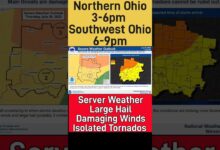

Cincinnati Reds first baseman Joey Votto has been activated for the first time in 2023.Votto, who underwent shoulder surgery last August, has been with the Triple-A Louisville Bats since the beginning of the season on a rehab assignment. "I can't rejoin a winning ballclub, with championship aspirations, without being ready," Votto said in his press conference Monday.In 22 games with the Bats, Votto is slashing .173/.340/.333 with three home runs and 11 RBI.Votto's return was teased over the weekend on his Instagram page, posting a video of him driving a school bus and being asked by one of the students when he's returning to the club.The Toronto native last played with the Reds on August 16 last year before suffering a shoulder injury that required surgery.Opening Day 2023 was the first opening day since Votto's call-up to the show that he wasn't part of the Reds' opening day roster.Despite the Reds missing their franchise first baseman, Cincinnati is fresh off their best road trip in over 50 years and are in the midst of an eight-game winning streak - the club's longest since 2012, including a three-game sweep over the defending champion Houston Astros.Entering play Monday, the start of a three-game series against the Colorado Rockies, Cincinnati is a half-game back of the Milwaukee Brewers in the NL Central standings and are sitting at 37-35 overall.
Cincinnati Reds first baseman Joey Votto has been activated for the first time in 2023.
Votto, who underwent shoulder surgery last August, has been with the Triple-A Louisville Bats since the beginning of the season on a rehab assignment.
This content is imported from Twitter.
You may be able to find the same content in another format, or you may be able to find more information, at their web site.
"I can't rejoin a winning ballclub, with championship aspirations, without being ready," Votto said in his press conference Monday.
In 22 games with the Bats, Votto is slashing .173/.340/.333 with three home runs and 11 RBI.
Votto's return was teased over the weekend on his Instagram page, posting a video of him driving a school bus and being asked by one of the students when he's returning to the club.
The Toronto native last played with the Reds on August 16 last year before suffering a shoulder injury that required surgery.
Opening Day 2023 was the first opening day since Votto's call-up to the show that he wasn't part of the Reds' opening day roster.
Despite the Reds missing their franchise first baseman, Cincinnati is fresh off their best road trip in over 50 years and are in the midst of an eight-game winning streak - the club's longest since 2012, including a three-game sweep over the defending champion Houston Astros.
Entering play Monday, the start of a three-game series against the Colorado Rockies, Cincinnati is a half-game back of the Milwaukee Brewers in the NL Central standings and are sitting at 37-35 overall.
Source link








